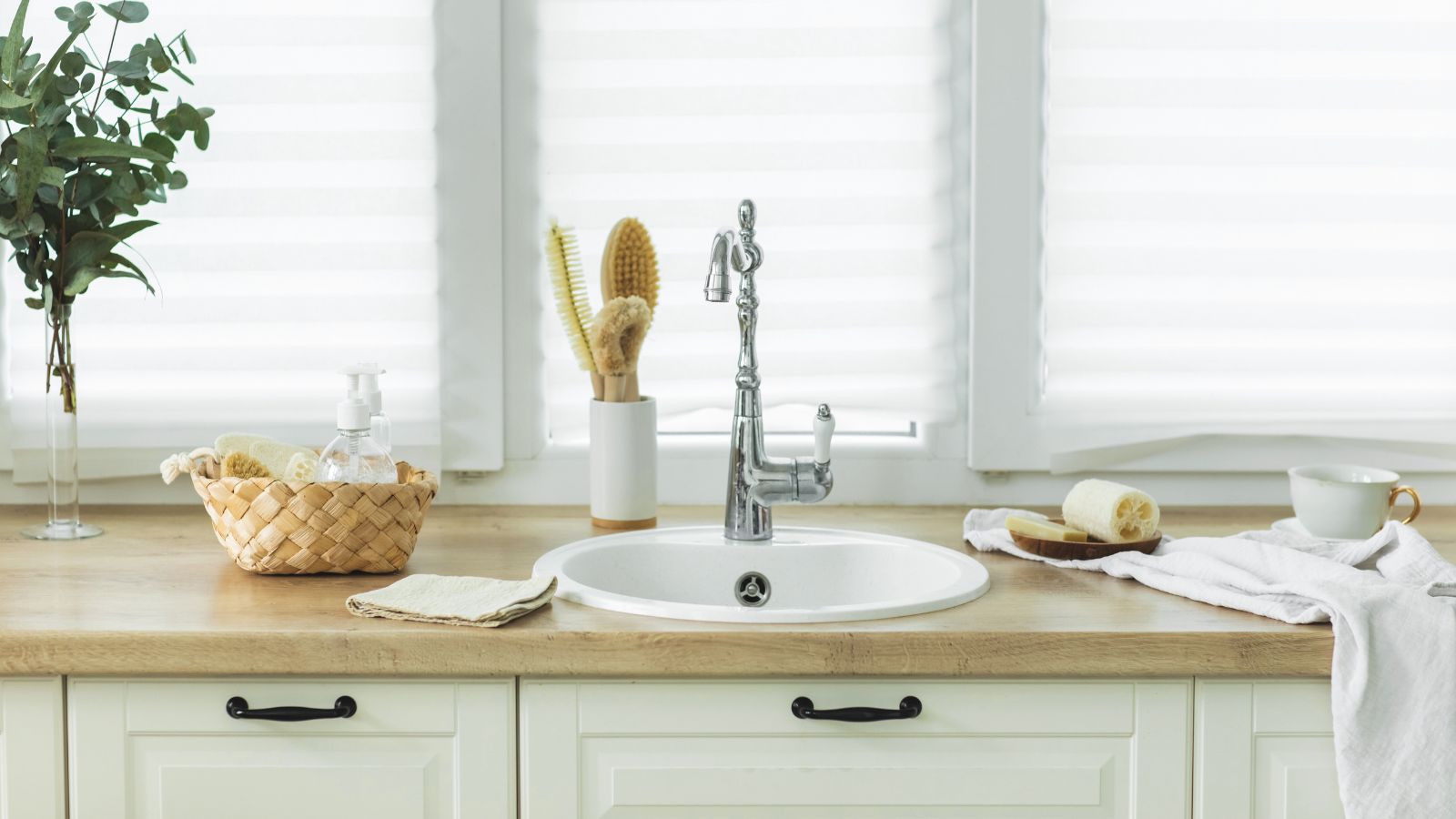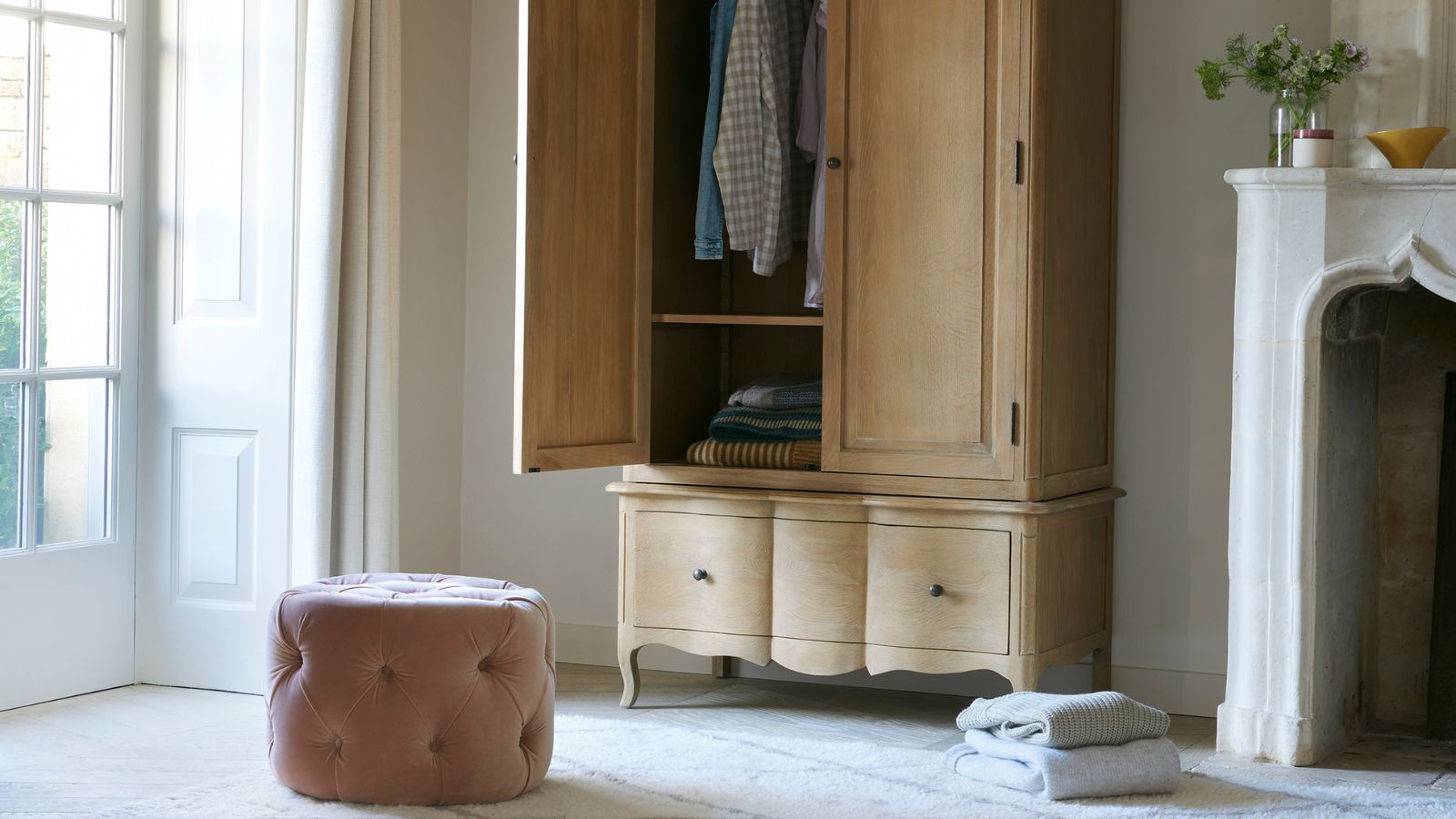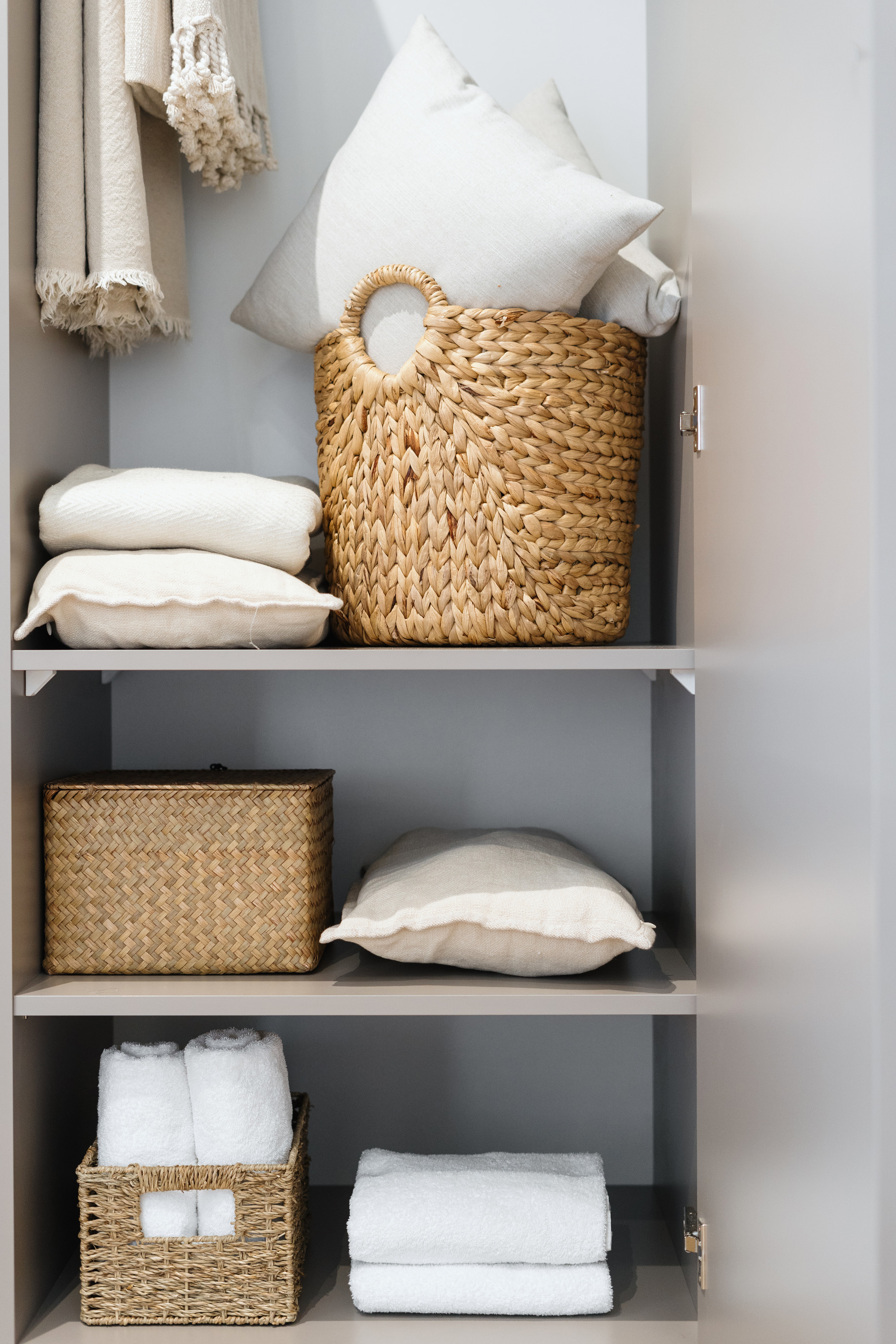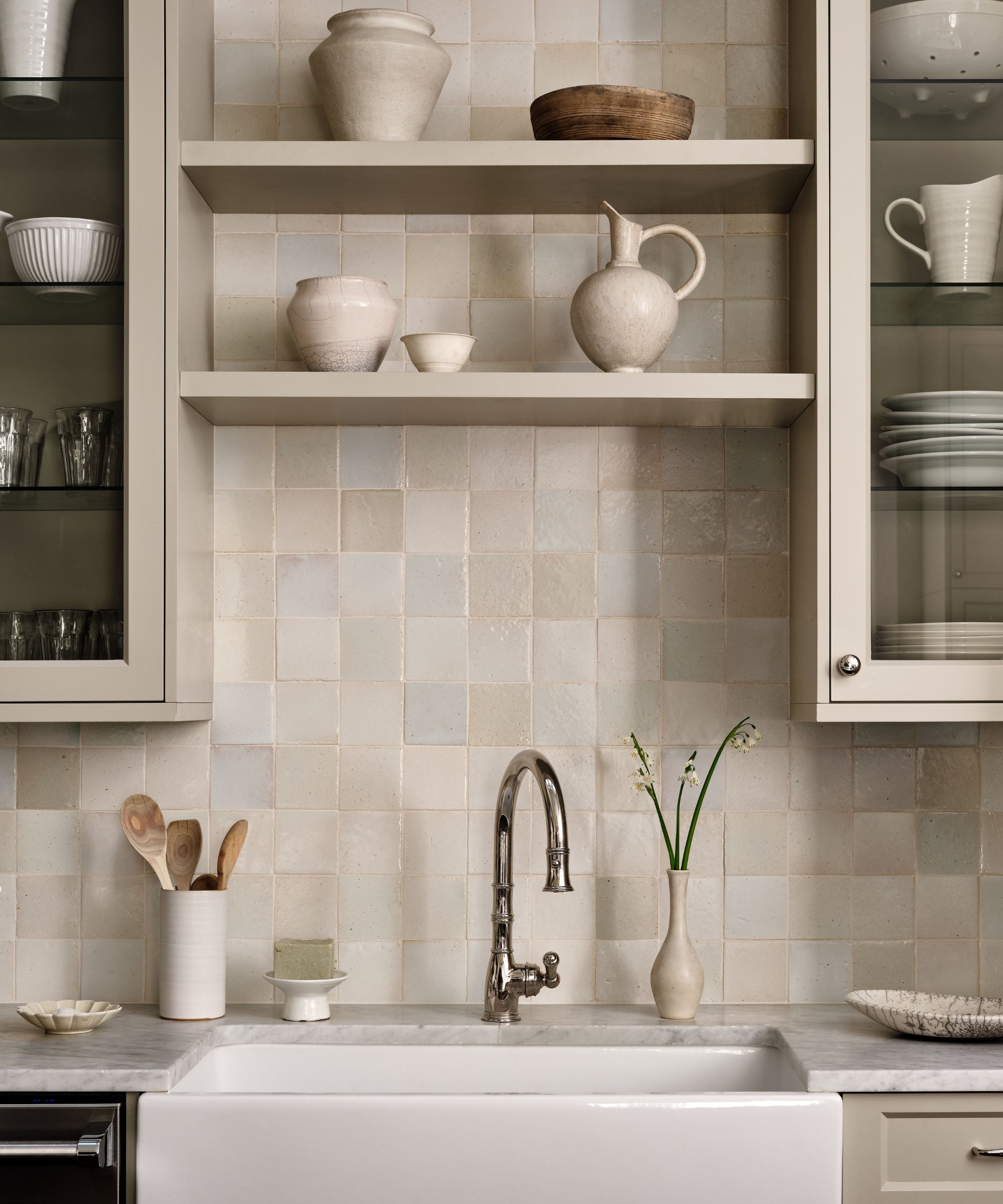
If you spend much time on the internet – be it Google, Instagram, TikTok or any other social media platform – you’ll likely have seen a variety of ‘hacks’ recommended for easy cleaning and decluttering; in fact, there are usually hundreds of these being shared at any one time. But are any of these tricks something the professionals would recommend?
Viral decluttering hacks and cleaning tips cover a spectrum of issues, from how to part with items you’re unsure about to tricks for making cleaning less time-consuming. But the issue with many of these ‘hacks’ is that professionals often do not verify them. While there’s no issue with taking inspiration from a social media post, it’s also important to analyze whether these tricks are right for your home and the items you own, or whether they risk damaging them in some way or fail to give the full picture of decluttering.
We’ve ranked some of the most popular viral cleaning and decluttering hacks out there with the help of experts to help you figure out whether these tips and tricks are worth your time.
Viral Cleaning And Decluttering Hacks Ranked: From Worst To Best
We've ranked the below cleaning and decluttering hanks from worst to best, with expert organizers and cleaning professionals highlighting why, while some hacks will work very well, others may not be a great idea to try in your home.
1. The saucepan lid couch-cleaning trick

Viral cleaning hacks come in all forms, and one popular trick even covers how to clean your couch using a saucepan lid - yes, really! But according to cleaning expert and COO of FreshSpace Cleaning, Will Cotter, this is one trick you will want to avoid.
'When it comes to viral online cleaning hacks you shouldn’t do, all I can think about is the saucepan upholstery hack,' he says. The hack involves a saucepan lid and a cloth, which people usually use to clean their sofas. Will explains: 'People take a dishwasher tablet, dilute it in water, soak a microfiber towel in the mixture, hook the towel around a pot lid, and then run it over the stain.'
So why is this hack so ill-advised? Will explains that while it may work on some surfaces (such as in the viral video below), it usually isn't very effective at removing stains and it can also have an adverse effect on the quality of your sofa or armchair if you persist with it on a regular basis.
@tanyahomeinspo ♬ Flip A Switch. (Sped Up) - RAYE
'The chemicals in the dishwasher tab can be too harsh for the fabric, making it look old and faded over time. Plus, leftover detergent can attract dirt, making your upholstery look pretty filthy, which is the opposite of what you’re aiming for,' Will explains.
'Then, there’s also the health risk. Some dishwasher tabs have ingredients that can harm you if they enter your system or touch your skin. And if you don’t rinse the upholstery well enough, those chemicals can stick around and be a danger to you, your family or pets.'
Instead, he advises returning to the good old-fashioned, tried and true methods for cleaning a couch. 'If you’re planning on cleaning upholstery, vacuum the surface beforehand, just to get rid of any loose dirt or pet hair,' he recommends. Once ready, apply a properly approved upholstery cleaning solution – such as Puracy Professional Carpet Cleaner from Amazon – and blot at any stains with a dry cloth. Rinse the area with water and let it dry completely before using it again.
2. The carpet-scraping hack

The cleaning hacks that go viral are usually those that appear to clean our homes thoroughly in a way that our usual practices don’t. And that’s exactly why the carpeting cleaning hack of ‘carpet scraping’ has been soaring in popularity recently. But what exactly is it?
This hack involves taking a metal scraping device – such as this lint remover from Amazon - to the carpet and scraping it along the floor in order to lift hair, dust and dirt from the carpet manually. In social media videos, the trick appears to be very effective, ridding the carpet of more dirt than the best vacuums for pet hair can usually pick up. But is it a good idea, and does it work as well as the videos suggest?
While it does appear to be legitimately effective, unfortunately, Jenna Arkin, chemist, cleaning expert, and Chief Innovation Officer of ECOS, suggests treating this hack with caution. She explains that it can potentially damage the quality of your carpet in the long term.
@cleanupwithjo ♬ In the Night Garden Closing Theme - Andrew Davenport
'Using a carpet scraper to remove hair, dust, and dirt from carpets has gained popularity due to the immediate gratification of seeing these unwanted elements extracted,' she says. 'However, I would advise against this method. The primary concern is that scrapers can significantly damage carpet fibers over time.
'Each use of a scraper effectively pulls out the top layer of the carpet's fibers. This is akin to brushing your hair with a brush that removes strands each time; however, unlike hair that can regrow from our scalp, a carpet cannot replenish its lost fibers.'
Charlie King, cleaning expert and Founder of Greenway Carpet Cleaning Las Vegas agrees, explaining that while some carpets may withstand this cleaning method, it’s best not to assume that yours can: ‘I'd advise testing the method in a small, inconspicuous area first before applying it to the entire carpet.'
It's also worth noting that the carpet scraping trick is fairly labor-intensive and requires a lot of time and work to cover an entire carpeted home.
Jenna also points out that there are far gentler options for cleaning your carpet deeply. 'To maintain both the appearance and longevity of your carpet, it's preferable to opt for deep cleaning methods like steam cleaning, which can be performed by professional cleaning services.'
3. The 20/20 decluttering rule

A decluttering concept that has been floating around social media for months now is the 20/20 rule. With one video discussing the 20/20 rule having over 162,000 likes, it’s safe to say that it’s a hack that’s gone viral several times over.
The essence of the hack is that if you are currently debating whether or not to keep an item that costs less than $20 to re-buy, and you don’t use it and haven’t in a while, get rid of it. Another version of the hack says that if you can replace an item you’re considering decluttering in 20 minutes for less than $20, you can safely throw it out.
The idea is that it won’t take you much time and effort to re-purchase an item, should you ever need it in the future, meaning it's not much of a loss if you discard it.
@maizimmy ♬ original sound - Mai Zimmy - Cleantok & MomLife
So how do professional organizers feel about this hack? Certified virtual organizing professional Nicole Gabai says: ‘I would generally disagree with this. The idea of throwing something out just because it is 'cheap' to re-buy doesn't really make practical sense. And to replace those when needed is not only inconvenient, but it can also become very expensive.’
And that’s not all; Nicole argues that this trick doesn't quite get to the heart of decluttering, either. ‘It is also not the best criteria to use when deciding what to keep and what to toss. It means we aren't asking the right questions,’ she says. ‘What I recommend instead is to spend your time evaluating each item by deciding simply if it is useful to you.'
4. The 4-basket decluttering system

One trick that first went viral years ago, and still regularly pops up on TikTok and Instagram, is the ‘4-basket’ decluttering system. Very simply, the concept states that – to help make decluttering as easy as possible – you should set out four bins labeled ‘keep’, ‘donate’, ‘sell’ and ‘trash’.
The trick then suggests carrying these bins with you to declutter room-by-room, supposedly making the decluttering process more streamlined, allowing you to easily transport items between rooms and eventually out of your home.
@gillaleighhome.designs ♬ This Is How We Do It (Album Version) - Montell Jordan
Though experts widely regard this as a great decluttering tactic, Nicole points out that one drawback is that it doesn’t help with what can often be the hardest part of decluttering: re-homing the items you have decided to keep.
'Those are great 'initial' sorting categories, so this is a solid decluttering hack. But it's only half of the story,' she says. 'The next most important sorting component is to create all of the sections into which the ‘keep’ box will be divided.
'Gathering items only in a ‘keep’ box doesn't inform you where it will go, and how it will be stored. That needs to be established as you go, or else you are doing double work in the ‘keep’ category without really realizing it.'
5. Dry dusting walls with a mop

Dusting your walls with a mop – whether you're getting rid of dust in a bathroom, or dusting your bedroom – may sound like an unusual idea, but it's taken over social media recently, with an array of cleaning influencers using a flat mop to dust their walls. But before you panic, no one is suggesting you clean your walls with a sopping wet mop – instead, the hack suggests using a dry flat mop to tackle dust and debris.
And it turns out it’s actually a great idea. 'Dusting walls with a dry mop is a good trend to jump on,' Will Cotter tells us. 'Dry mops are a total breeze to use and don’t require any fancy tools or solutions. A dry mop is gentle on your walls, so you don’t have to worry about damaging paint or wallpaper as you dust your walls.'
@novacleaners ♬ original sound - NovaCleaners
'They’re also lightweight, easy to maneuver, and perfect for folks with mobility limitations or limited strength.' Plus, a dry mop can get to spots you’d never be able to reach on your own, such as high-up corners and above doors.
However, there are some caveats to remember to avoid damaging your walls with this hack. 'Just keep in mind that if you’ve got newly painted walls, wait at least 30 days before cleaning them, or you could mess up their finish,' Will explains. 'And if you want to keep them looking fresh for the long haul, schedule regular cleanings every six months or so.'
6. Cleaning your faucet with a bag of vinegar

Perhaps one of the most effective viral cleaning hacks around is cleaning a shower head or faucet with vinegar.
The idea is very simple; all you need to do is fill a plastic bag with white vinegar, loop it around your faucet or shower head so that the entire thing sits in vinegar, and then secure the bag onto the faucet with an elastic band (or a couple of elastic bands, if needed).
@tidywithspark ♬ original sound - Sandy
Due to its acidic nature, cleaning with vinegar is particularly effective for ridding your taps of limescale, mold, and any other gunk that may have accumulated, Jenna Arkin says. 'Vinegar indeed stands out as a stellar, naturally derived solution capable of tackling dirt, grime, and the often-stubborn hard water scale, so this is a great hack. Vinegar excels as a solvent, effectively dissolving mineral deposits and clearing buildup.’
Before attempting a viral cleaning hack at home, it's a good idea to first patch-test cleaning solutions and products on a small, inconspicuous spot. While it may be tempting to look for ways to clean your home fast, sometimes it pays to take your time and do the job thoroughly to avoid costly damages or cleanup.







